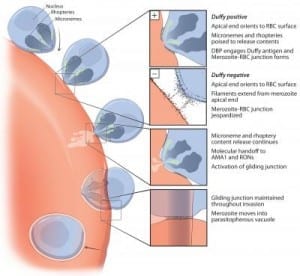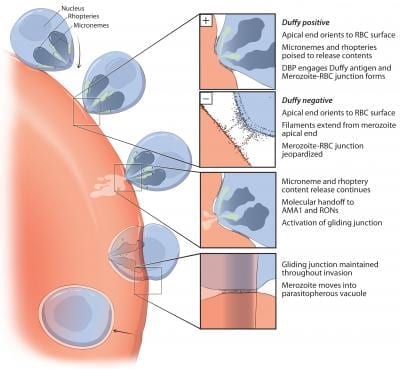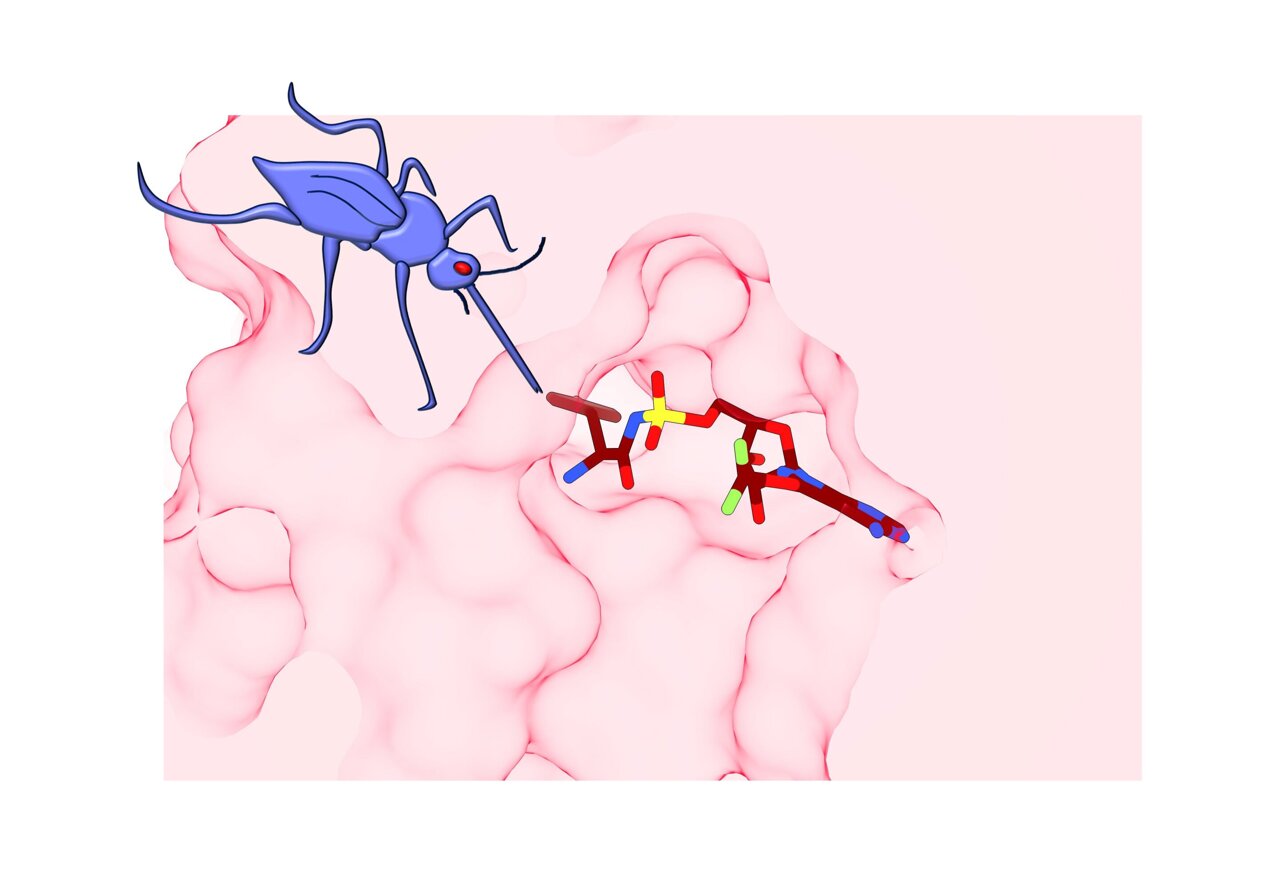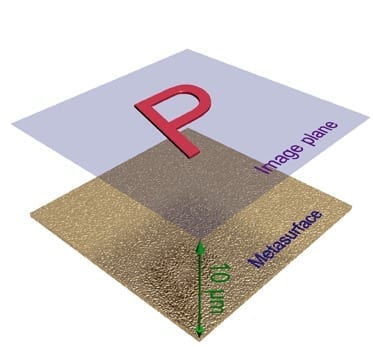
3 gene mutations appear to be invasion mechanisms
Researchers at Case Western Reserve University and Cleveland Clinic Lerner Research Institute have discovered recent genetic mutations in a parasite that causes over 100 million cases of malaria annually—changes that may render tens of millions of Africans who had been considered resistant, susceptible to infection.
Peter A. Zimmerman, professor of international health, biology and genetics at the Case Western Reserve School of Medicine, and David Serre, a scientific staff member of the Genomic Medicine Institute at Lerner and assistant professor of genomics at Case Western Reserve, report their findings at the American Society of Tropical Medicine and Hygiene annual meeting today (11/15).
They and fellow researchers describe the changes in the Plasmodium vivax genome in papers scheduled to be published in the journal PLoS Neglected Tropical Disease on Nov. 21 and Dec. 5.
To learn the functions of the mutations, and whether the parasite is evolving around a natural defense, Zimmerman and Serre have received a $3.5 million grant from the National Institute of Allergy and Infectious Disease at the National Institutes of Health. They will begin their field study in early 2014.
“We’ve found a duplication of a gene known to enable the parasite to infect red blood cells and two possible additional components to a more complex red cell invasion mechanism,” Zimmerman said.
Researchers have long thought that P. vivax infects a person one way: a protein on the parasite, called the Duffy binding protein, latches onto a Duffy receptor on the surface of the person’s red blood cell and works itself through the membrane. People who lack the receptor are called Duffy negative and are resistant to infection.
But, during the last decade, reports of cases of Duffy negative patients with P. vivax infections have been on the rise in several parts of the world.
P. vivax has been called benign malaria because it is less lethal than malaria caused by Plasmodium falciparum. But unlike its cousin, P. vivax can hide from treatment in a host’s liver and repeatedly emerge to cause relapses of debilitating headaches, nausea and fever. This chronic malaria often triggers a cycle of poverty for sufferers left unable to work for long periods. By weakening the immune system, the disease contributes to death.
The Malaria Atlas Project estimates 2.5 billion people worldwide are at risk for P. vivax malaria.
P. vivax does not grow well in the laboratory, so to try to understand how the parasite lives and operates, the researchers gathered samples from malaria patients and focused on its genome.
They found a duplication of the Duffy binding protein in half of 189 P. vivax infection samples taken in Madagascar. Other researchers’ prior efforts to sequence the P. vivax genome missed the duplication but all indications are it’s a recent change, Serre said.
“The way we date duplications is to compare differences between the two parts: the more different they are, the older they are,” he explained. “They accumulate mutations. The two parts of this duplication have, among 8,000 base pairs, only one difference.”
Often a second copy of a gene enables an organism to outmaneuver a defense, Serre continued. “Instead of making a supergene, a duplication is simpler for nature.”
The researchers suspect the mutation is spreading from Madagascar through travelers. They found the duplication in less than 10 percent of samples from Cambodia and Sudan.
The new components found on the P. vivax genome are two proteins that closely resemble binding proteins used by related malaria parasites to enter immature and mature red blood cells. Both were present in samples from Cambodia, Brazil, Mauritania and North Korea.
The new proteins were absent in a 2008 sequencing of P. vivax, which is used as a reference genome, suggesting the developments are recent.
“Binding proteins and receptors are locks and keys,” Zimmerman said. “If the parasite has one key and there’s one lock, you may be able to block that. But if it has more keys and there are more locks, there are multiple ways in.”
The researchers say the duplication may be a cause of the growing infections among Duffy negative people, but it’s too early to tell.
Zimmerman, Serre and colleagues aim to find the answer with the newly-funded research project. They’ll begin by studying blood samples taken from 1,500 patients at each of two locations in Madagascar.
They and colleagues have great concern that a loss of resistance to P. vivax infection will now enable the parasite to travel the 250 miles across the Mozambique Channel to Africa. There, falciparum malaria is wrecking havoc on a population that has for the most part lived P. vivax-free. In some regions of the continent, 100 percent of the population is Duffy negative.
Go deeper with Bing News on:
Vivax malaria
- ‘Malaria during pregnancy increases neurological risks for babies’
Malaria during pregnancy poses significant risks to the brain development of babies, experts said on World Malaria Day on Thursday.
- Govt should make malaria tests, treatment free for indigents, children - St Racheal's Pharma
As Nigeria joined the rest of the world in marking this year’s World Malaria Day (WMD) on Thursday, an indigenous pharmaceutical company, St. Racheal’s Pharma, called on both the federal and state ...
- Recent Advances in Plasmodium Vivax Malaria Elimination
Since the regenerated call for malaria elimination by WHO in 2016, 12 countries endemic for Plasmodium falciparum or Plasmodium vivax have been declared malaria free. Whilst acute P. vivax infection ...
- Malaria Treatment: Papaya to Neem, 7 Indigenous Home Remedies to Cure The Mosquito-Borne Disease
Malaria continues to remain a major health threat in many parts of the world. Here, we have shared 7 indigenous home remedies that can help alleviate the symptoms and effects of the severe disease.
- World Malaria Day 2024: Theme, causes, symptoms, treatment and prevention
The purpose of Malaria Day is to battle this disease, address those hindrances extensively and adapt our ways to deal with the developing scenario of this sickness ...
Go deeper with Google Headlines on:
Vivax malaria
[google_news title=”” keyword=”Vivax malaria” num_posts=”5″ blurb_length=”0″ show_thumb=”left”]
Go deeper with Bing News on:
Contract for the Web
- NOW Offers No-Contract Mobile, Internet, and TV for One Low Monthly Price
The new offering declutters your communications and entertainment with simple, hassle-free pricing and no obligations.
- Intrepid Secures $446M Army Contract for Enterprise Business System Support
Intrepid has received a potential five-year, $445.8 million contract from the U.S. Army to provide support services for the General Fund Enterprise Business System.
- Marco's Pizza inks franchise agreement for 15 locations in Midwest
Subscribe now to the Restaurant Operator Daily, which brings you the top stories from Fast Casual, Pizza Marketplace, and QSR Web.
- Nexon Signs Global Publishing Agreement for Project T
NEXON announced that its subsidiary, Nexon Korea Corporation, signed a global publishing agreement with GRAYGAMES Inc. to launch a new MMORPG, Project T for PC and mobile. Developed by GRAYGAMES, ...
- Nexon Signs Global Publishing Agreement For Project T, The MMORPG Based On Korean Web Novel Overgeared
Nexon announced a global publishing deal with developer Graygames for Project T, a new MMORPG based on the Korean web novel and webtoon Overgeared. For those unfamiliar, Overgeared focuses on the ...
Go deeper with Google Headlines on:
Contract for the Web
[google_news title=”” keyword=”Contract for the Web” num_posts=”5″ blurb_length=”0″ show_thumb=”left”]











